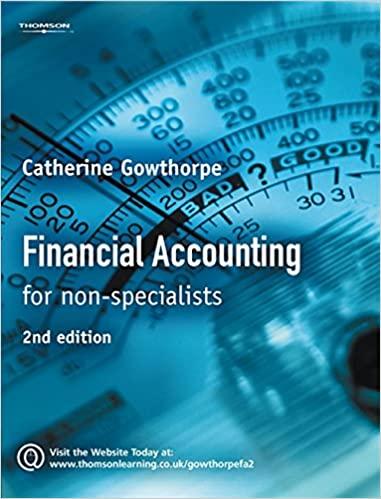



Financial statements for Thornton Company follow. THORNTON COMPANY Balance Sheets As of December 31 2019 2018 $ 24,000 21,600 57.000 142,000 26,000 270,600 22,000 290,000 29,000 $611,600 $20,000 7,600 49,000 150,000 11,000 237,600 15.000 275,000 24,000 $551,600 Assets Current assets Cash Marketable securities Accounts receivable (net) Inventories Prepaid items Total current assets Investments Plant (net) Land Total assets Liabilities and Stockholders' Equity Liabilities Current liabilities Notes payable Accounts payable Salaries payable Total current liabilities Noncurrent liabilities Bonda payable Other Total noncurrent liabilities Total liabilities Stockholders' equity Preferred stock, (par value $10, 48 cumulative, non- participating: 6,000 shares authorized and sued) Conmon stock no par: 50,000 shares authorized; 10,000 shares issued) Retained earnings Total stockholders' equity Total liabilities and stockholders' equity $ 40,000 113,800 25,000 178,800 $17,300 100,000 19,000 136,200 140,000 31,000 171,000 349,800 140,000 26,000 166,000 302.300 60,000 60,000 60,000 141,800 261,800 $611,600 60,000 129,200 249, 300 $551,600 HORNTON COMPANY Statements of Income and Retained Earnings For the Years Ended December 31 2019 2018 Revenues Sales (net) $390,000 $370,000 Other revenues 11, 2008 , 200 Total revenues 401,200 378,200 Expenses Coat of goods sold 195,000 151,000 Selling general, and 71,000 66,000 administrative Interest expense 12,800 12,000 Income tax expense 103,000 102,000 Total expenses 381,800 331,000 Net earnings net income) 19,400 47,200 Retained earnings, January 129.100 99.000 Less! Preferred stock 2,400 2,400 dividends Common stock 4,500 4,500 dividends Retained earnings, December $141,800 $129,300 31 Required Calculate the following ratios for 2019 and 2018. Since 2017 numbers are not presented, do not use averages when calculating the ratios for 2018. Instead, use the number presented on the 2018 balance sheet. a. Working captal, b. Current ratio. (Round your answers to 2 decimal places.) c. Quick ratio. (Round your answers to 2 decimal places.) d. Receivables turnover beginning receivables at January 1, 2018, were $50,000). (Round your answers to 2 decimal places.) e. Average days to collect accounts receivable. (Round your intermediate calculations to 2 decimal places and your final answers to the nearest whole number.) f. Inventory turnover (beginning Inventory at January 1, 2018, was $156,000). (Round your answers to 2 decimal places.) g. Number of days to sell inventory. (Round your intermediate calculations to 2 decimal places and your final answers to the nearest Whole number.) h. Debt to assets ratio. (Round your answers to the nearest whole percent.) I. Debt to equity ratio. (Round your answers to 2 decimal places.) J. Number of times interest was earned. (Round your answers to 2 decimal places.) k. Plant assets to long-term debt. (Round your answers to 2 decimal places.) I. Net margin. (Round your answers to 2 decimal places.) m. Turnover of assets. (Round your answers to 2 decimal places.) n. Return on investment (Round your answers to 2 decimal places.) o. Return on equity. (Round your answers to 2 decimal places.) p. Earnings per share. (Round your answers to 2 decimal places.) q. Book value per share of common stock. (Round your answers to 2 decimal places) 1. Price-earnings ratio (market price per share: 2018, $12.55,2019, $14.10). (Round your intermediate calculations and final answer to 2 decimal places.) s. Dividend yield on common stock. (Round your answers to 2 decimal places.) 2019 2018 times Itimes days days times days % times days a. Working capital b. Current ratio c. Quick ratio d. Receivables turnover Average days to collect accounts receivable f. Inventory turnover 9. Average days to sell inventory hl Debt to assets rato Debt to equity ratio i. Number of times interest earned k. Plant assets to long-term debt I. Net margin m Asset turnover n. Return on investment O. Return on equity p. Earnings per share Book valve per share Price-earnings ratio s. Dividend yield ESSES 11 Itimes Itimes per share per share per share per share










